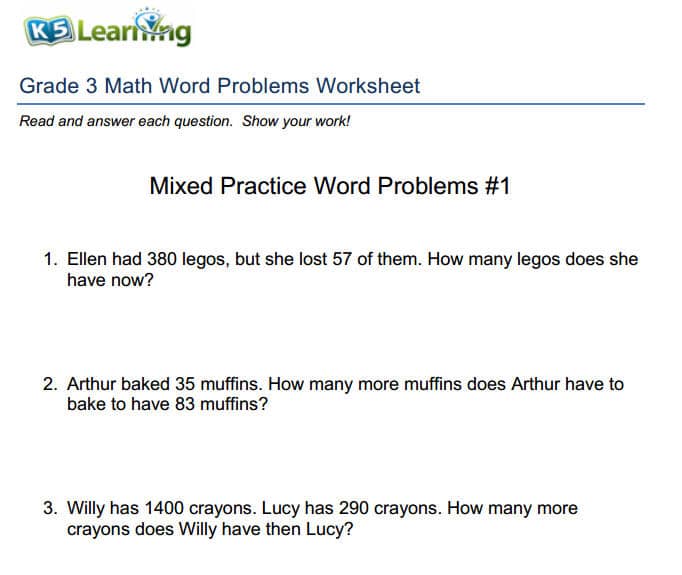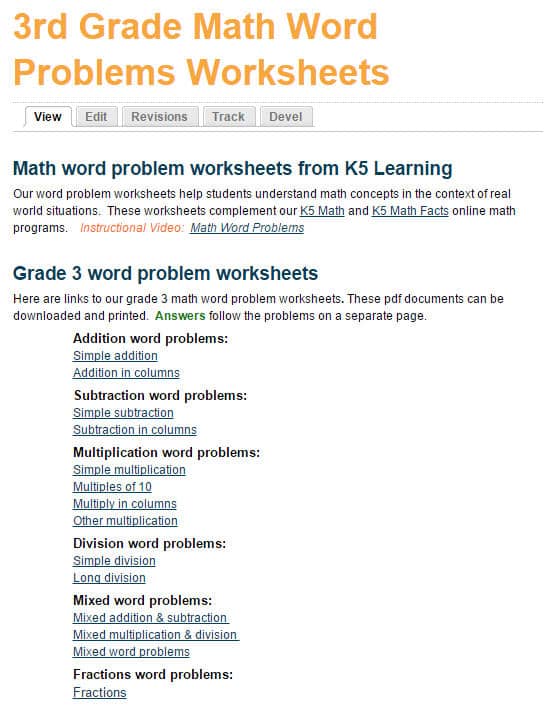Does your child fear math word problems? He or she is not alone. When words take over, it seems like all logic goes out the window. Do not fear, there is a process. Using some simple steps, your child will master how to translate words into numbers, and easily solve those equations.
Solving a math word problem involves four steps:
1. Read through the question and set up a word equation (we’ll show you how in a minute).
2. Put numbers in place of the words to set up a regular math equation.
3. Now, solve the math equations.
4. Focus on answering the problem the question asks.
The easiest way to show this process is in a few examples. The most important part is not to try to get to the answer too fast, but rather to write down each piece of information. One solution will leads to another, and then another.
Example 1: addition and subtraction
John has four fewer pieces of candy than Bob. Bob has 18 candies. How many candies do John and Bob have together?
1. So let’s start: the initial step of the word problem is a fact finding mission.
From reading the problem, we know the following:
Bob = 18 (candies)
John + 4 = Bob
2. Put the numbers in in place of the words.
Bob = 18 – 4 = ?
3. Solve the math equation.
Bob = 18 – 4 = 14
4. Focus on answering the problem.
The problems wants to know how many candies the two boys have together.
You need to know:
John + Bob = ?
John 14 + Bob 18 = ?
14 + 18 = 32
John and Bob have 32 candy pieces.
Example 2: multiplication and division
Here’s an example that involves multiplication and division:
The height of a house is half as long as its width, and the width of the house is 80 feet. How tall is the house?
From the word equation, you know the following:
Width = 80
Height = Width ÷ 2
Plug in numbers for the words:
Height = Width 80 ÷ 2 = 40
The height of the house is 40 feet.

Example 3: multiple equations
Sometimes the word problem requires setting up more than one equation.
The express train is moving three times faster than the local train. If the local train is going 25 miles per hour, what’s the difference in speed between the express train and the local train?
Here are the facts:
Local = 25
Express = 3 x Local
Plug in the information you need:
Express = 3 x 25 Local = 75
However, the question asks you to find the difference in speed between the express train and the local train. Finding the difference between two numbers is subtraction:
Express – Local = ?
Plug in the information you’ve already found:
Express 75 – Local 25 = 50
The difference in speed between the express train and the local train is 50 miles per hour.
K5 offers free math word problem worksheets for grade 1 – 5. Go to our math worksheet pages, click on your grade, and then on the word problems link. Here’s the link to our grade 3 math word problems worksheets.


